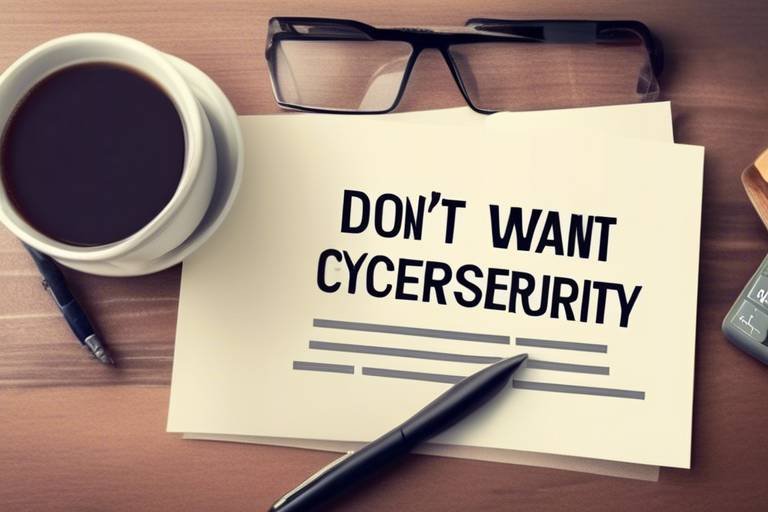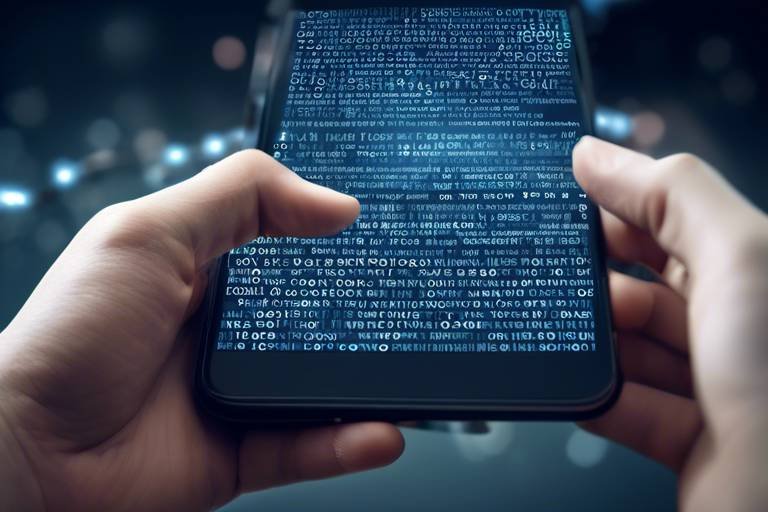Cybersecurity Risks in the Beauty Industry
The beauty industry is a vibrant and dynamic sector that encompasses everything from salons and spas to cosmetic brands and e-commerce platforms. However, as this industry continues to embrace digital transformation, it also becomes increasingly vulnerable to cybersecurity threats. In a world where customer data is the new gold, beauty businesses must tread carefully to protect sensitive information from prying eyes. Have you ever thought about how the data you share with your favorite salon is stored? Or what might happen if that information fell into the wrong hands? These are not just hypothetical scenarios; they are real risks that the beauty industry faces every day.
With the rise of online booking systems, loyalty programs, and personalized marketing, beauty businesses collect vast amounts of customer data. This data includes everything from names and addresses to payment details and even health-related information. Unfortunately, this wealth of data makes them prime targets for cybercriminals who are always on the lookout for vulnerabilities to exploit. The consequences of a successful cyber attack can be devastating, not just for the business but also for the customers who trust them with their information.
In this article, we will delve into the various cybersecurity threats that plague the beauty industry, the impact of data breaches, and the best practices for safeguarding sensitive information. By understanding these risks, beauty businesses can take proactive measures to protect themselves and their customers in an increasingly digital landscape. So, let’s roll up our sleeves and get into the nitty-gritty of cybersecurity in the beauty world!
As the beauty industry continues to evolve, so do the threats it faces. The primary cybersecurity threats include:
- Data Breaches: Unauthorized access to sensitive information can lead to significant financial losses.
- Phishing Attacks: Cybercriminals often use deceptive emails to trick employees into revealing confidential information.
- Ransomware Incidents: This malicious software can lock businesses out of their own systems until a ransom is paid.
These threats can compromise not only sensitive information but also the very fabric of business operations. It’s crucial for beauty businesses to stay informed and vigilant against these risks.
The consequences of a data breach can be far-reaching. For beauty businesses, the impact often manifests in three significant areas:
- Financial Losses: The immediate costs associated with a breach can be staggering, including legal fees, fines, and loss of revenue.
- Reputational Damage: Trust is paramount in the beauty industry. A data breach can severely damage a brand's reputation, leading to lost customers and diminished market share.
- Long-term Effects on Customer Trust: Once trust is broken, it can take years to rebuild. Customers may be hesitant to share their information again, impacting future sales.
In the beauty industry, where customer relationships are built on trust and loyalty, the fallout from a data breach can be particularly devastating.
Beauty businesses collect various types of sensitive data that are attractive targets for cybercriminals. These include:
- Personal Information: Names, addresses, and contact details.
- Payment Details: Credit card numbers and billing information.
- Health-related Data: Information about allergies or skin conditions that customers may share during consultations.
Protecting this sensitive data is not just a legal obligation; it’s a moral one that beauty businesses must take seriously.
Customer information is the lifeblood of any beauty business. It’s essential to protect names, addresses, and contact details to prevent identity theft and fraud. Imagine the horror of a customer discovering that their personal information has been misused. This not only puts the customer at risk but also tarnishes the reputation of the business involved.
Securing payment data is crucial to maintaining customer confidence. Unauthorized transactions can lead to financial fraud, which can be catastrophic for both the customer and the business. Beauty businesses must implement robust security measures to ensure that payment information is encrypted and stored securely.
In addition to protecting customer data, beauty businesses must comply with various legal requirements and regulations. Failure to do so can result in severe penalties and further damage to reputation. Understanding these regulations is not just about avoiding fines; it’s about fostering a culture of security and trust.
To safeguard against cybersecurity threats, beauty businesses should implement best practices, including:
- Employee Training Programs: Comprehensive training can educate staff about cybersecurity risks and safe practices.
- Regular Software Updates: Keeping systems updated helps protect against vulnerabilities.
- Data Encryption Techniques: Encrypting sensitive data ensures that even if it is accessed, it remains unreadable.
By adopting these practices, beauty businesses can significantly reduce their risk of falling victim to cyber attacks.
No matter how secure a business believes it is, the reality is that incidents can and do happen. Having an incident response plan in place is essential to effectively manage and mitigate the fallout from cybersecurity incidents.
Forming an incident response team is a proactive step that beauty businesses can take. This team should be equipped to quickly address cybersecurity threats and minimize damage to the business. Think of them as the firefighters of the digital world, ready to spring into action at a moment’s notice.
After an incident occurs, conducting a post-incident analysis is crucial. This analysis helps businesses learn from breaches and improve future defenses against potential threats. It’s all about turning a negative experience into a learning opportunity that strengthens the organization.
Q: What are the most common cybersecurity threats in the beauty industry?
A: The most common threats include data breaches, phishing attacks, and ransomware incidents.
Q: How can beauty businesses protect customer data?
A: Implementing employee training, regular software updates, and data encryption are essential steps to protect customer data.
Q: What should a beauty business do after a data breach?
A: It’s crucial to have an incident response plan in place, form an incident response team, and conduct a post-incident analysis.

Understanding Cybersecurity Threats
In today's digital age, the beauty industry is not just about stunning makeovers and flawless skin; it's also about navigating a complex web of cybersecurity threats. As beauty businesses increasingly rely on technology for operations, they become prime targets for cybercriminals. So, what are the primary threats lurking in the shadows, waiting to pounce on unsuspecting beauty brands? Let's dive into the murky waters of data breaches, phishing attacks, and ransomware incidents, which can wreak havoc on sensitive information and disrupt business operations.
Firstly, a data breach occurs when unauthorized individuals gain access to confidential information. This can happen through various means, such as exploiting software vulnerabilities or using stolen credentials. For beauty businesses, a breach could mean exposing customer information, payment details, and even proprietary formulas. Imagine the chaos that would ensue if a brand's secret recipe for a popular skincare product fell into the wrong hands! The implications are not just financial; they can also tarnish a brand's reputation and erode customer trust.
Next up is the infamous phishing attack. This sneaky tactic involves cybercriminals masquerading as legitimate entities to trick individuals into revealing sensitive information. For instance, an employee might receive an email that appears to be from the company’s IT department, requesting a password reset. If they fall for this deception, the attackers gain access to the company’s systems, potentially leading to a data breach. It's like a wolf in sheep's clothing, and unfortunately, many fall victim to this cunning ploy.
Then there's ransomware, a particularly nasty form of malware that encrypts a business's data, rendering it inaccessible until a ransom is paid. Imagine waking up to find that all your customer records and business operations have been locked away, and the only key is held by a cybercriminal demanding payment. This not only leads to significant financial losses but can also cause prolonged downtime, affecting customer service and brand loyalty.
To put this into perspective, let’s look at some statistics that highlight the urgency of addressing these cybersecurity threats in the beauty industry:
| Threat Type | Impact on Beauty Industry | Frequency of Occurrence |
|---|---|---|
| Data Breaches | Exposure of sensitive customer information | Common |
| Phishing Attacks | Unauthorized access to systems | Very Common |
| Ransomware | Loss of access to critical data | Increasingly Common |
As the beauty industry becomes more intertwined with technology, the importance of understanding these cybersecurity threats cannot be overstated. It's crucial for brands to stay vigilant and proactive in their approach to cybersecurity. This means not only recognizing the threats but also implementing effective strategies to combat them. After all, in a world where beauty is often skin-deep, the integrity of customer data should be at the forefront of every beauty business's priorities.

Impact of Data Breaches
When it comes to the beauty industry, the impact of data breaches can be nothing short of catastrophic. Imagine waking up one morning to find that your customer database has been compromised, and sensitive information is now in the hands of cybercriminals. The ramifications of such an event can ripple through a business, affecting everything from finances to reputation. In a world where customers are increasingly concerned about their data privacy, a breach can lead to a significant loss of trust.
Financial losses are often the most immediate consequence of a data breach. According to recent studies, the average cost of a data breach can soar into the millions, depending on the size of the business and the extent of the breach. This includes not only the costs associated with the breach itself, such as legal fees and regulatory fines, but also the long-term financial impact of lost sales and diminished customer loyalty. In the beauty industry, where personal relationships and trust are paramount, losing even a fraction of your customer base can lead to devastating financial repercussions.
Moreover, the reputational damage that follows a data breach can be challenging to recover from. Customers may feel betrayed, leading them to take their business elsewhere. In an industry that thrives on brand loyalty and word-of-mouth referrals, a tarnished reputation can be a business's worst enemy. For instance, if a well-known beauty brand suffers a breach, not only do they lose the trust of their current customers, but they also risk deterring potential new customers who might think twice before sharing their personal information.
Long-term effects on customer trust and loyalty are perhaps the most insidious impact of a data breach. Once trust is broken, it can take years to rebuild. Customers may remain wary, opting for competitors who have not experienced such incidents. In fact, a survey revealed that 60% of consumers would stop doing business with a company that had suffered a data breach. This statistic underscores the importance of safeguarding customer data and maintaining a trustworthy image in the eyes of consumers.
In summary, the impact of data breaches in the beauty industry extends far beyond immediate financial losses. Businesses face a trifecta of challenges: financial repercussions, reputational damage, and long-term trust issues. It's a harsh reality that underscores the necessity for robust cybersecurity measures. As the digital landscape continues to evolve, beauty businesses must prioritize the protection of their customer data to avoid the potentially devastating consequences of a data breach.
- What are the main causes of data breaches in the beauty industry?
Data breaches can occur due to various factors, including phishing attacks, inadequate security protocols, and employee negligence.
- How can beauty businesses protect themselves from data breaches?
Implementing strong cybersecurity measures, conducting regular employee training, and ensuring compliance with data protection regulations are essential steps.
- What should a beauty business do immediately after a data breach?
It's crucial to contain the breach, inform affected customers, and assess the damage. Developing a response plan can help mitigate the fallout.

Types of Sensitive Data
In the beauty industry, businesses collect a variety of sensitive data that can become prime targets for cybercriminals. Understanding the types of data at stake is crucial for implementing effective cybersecurity measures. This data can be broadly categorized into several key types, each with its own vulnerabilities and risks associated with potential breaches.
First and foremost, personal information is a significant concern. This includes details such as names, addresses, and phone numbers. When such information falls into the wrong hands, it can lead to identity theft, where a criminal impersonates someone else to commit fraud. For instance, imagine a customer’s name and address being used to create a false identity for purchasing high-end beauty products. The consequences can be devastating for both the customer and the business involved.
Secondly, payment details represent another layer of sensitive data that requires stringent protection. This includes credit card numbers, expiration dates, and CVV codes. If this information is compromised, it can lead to unauthorized transactions and significant financial loss. For beauty businesses, maintaining customer confidence is paramount; a single breach could tarnish their reputation and drive customers away. It's akin to a trusted salon suddenly being associated with fraudulent activities, which could deter even the most loyal clients.
Moreover, many beauty businesses collect health-related data, especially those offering personalized services or products tailored to specific skin types or conditions. This includes information about allergies, skin sensitivities, and previous treatments. Such data is not only sensitive but also often protected under various health regulations. If breached, it could lead to serious legal ramifications, alongside the erosion of customer trust.
In summary, the types of sensitive data that beauty businesses manage are vast and varied. From personal information to payment data and health-related information, the need for robust cybersecurity measures has never been more critical. It's essential for businesses to recognize these vulnerabilities and take proactive steps to protect their customers' data, ensuring a safe and trustworthy environment in an increasingly digital landscape.
- What types of sensitive data are most at risk in the beauty industry?
The most at-risk types of sensitive data include personal information (names, addresses), payment details (credit card information), and health-related data (allergies, skin conditions).
- How can beauty businesses protect sensitive customer data?
Businesses can protect sensitive data by implementing strong cybersecurity measures, including employee training, regular software updates, and data encryption.
- What are the consequences of a data breach in the beauty industry?
Consequences can include financial losses, reputational damage, and a loss of customer trust, which can have long-term effects on business operations.

Customer Information
In the beauty industry, customer information is not just a collection of names and addresses; it is a treasure trove of sensitive data that can be exploited if not adequately protected. Think about it: when clients visit a salon or purchase products online, they willingly share personal details, trusting that their information will be safeguarded. This trust is paramount, and any breach can lead to severe consequences not only for the customers but also for the businesses handling that data.
Customer information typically includes:
- Full Names: Essential for personalizing services and communications.
- Addresses: Necessary for shipping products and providing location-based services.
- Contact Details: Emails and phone numbers are vital for appointment confirmations and marketing efforts.
- Payment Information: Credit card details and billing addresses are crucial for transactions.
- Health-Related Data: Information about allergies or skin types that can affect product recommendations.
Each piece of information plays a significant role in the customer experience, but it also presents a risk. Cybercriminals are constantly on the lookout for opportunities to exploit vulnerabilities in systems that store this data. For instance, if a hacker gains access to a beauty salon's database, they could potentially steal customer identities, leading to identity theft and financial fraud. This not only puts customers at risk but also damages the reputation of the business involved.
Moreover, the fallout from a data breach can be catastrophic. Customers may feel violated and lose trust in the brand, leading to a decline in customer loyalty. In a world where word-of-mouth and online reviews can make or break a business, negative publicity from a data breach can be devastating. Therefore, protecting customer information should be a top priority for beauty businesses.
To ensure that customer information is adequately protected, beauty businesses should implement robust security measures, such as:
- Data encryption to protect sensitive information during transmission.
- Access controls to limit who can view or handle customer data.
- Regular audits to identify and rectify potential vulnerabilities.
Ultimately, safeguarding customer information is not just a regulatory requirement; it is a fundamental aspect of building lasting relationships with clients. By prioritizing data security, beauty businesses can foster trust, enhance customer loyalty, and protect their brand reputation in an increasingly digital landscape.
Q: What types of customer information are most at risk in the beauty industry?
A: The most at-risk types of customer information include personal identification details (like names and addresses), payment information (credit card numbers), and any health-related data shared for service personalization.
Q: How can beauty businesses protect customer information?
A: Businesses can protect customer information by implementing strong cybersecurity measures, including data encryption, access controls, and regular security audits.
Q: What should a beauty business do if a data breach occurs?
A: In the event of a data breach, a beauty business should have an incident response plan in place, which includes notifying affected customers, assessing the breach's impact, and taking steps to prevent future incidents.
Q: Why is customer trust important in the beauty industry?
A: Customer trust is crucial because it encourages repeat business and referrals. If customers feel their information is not secure, they are likely to take their business elsewhere.

Payment Data Security
In today's fast-paced digital world, is not just a luxury; it's a necessity. With the increasing number of online transactions in the beauty industry—whether it's purchasing skincare products, booking appointments, or subscribing to beauty services—ensuring the safety of payment information has become paramount. Cybercriminals are always on the lookout for vulnerabilities, and the beauty industry, being heavily reliant on e-commerce, is a prime target.
When customers enter their credit card numbers, bank account details, or any other sensitive financial information, they trust that businesses will protect this data with the utmost care. However, breaches can occur, leading to unauthorized transactions and financial fraud that can devastate a business’s reputation and customer trust. Imagine a salon that faces multiple fraudulent chargebacks because it failed to secure its payment systems—this not only creates a financial burden but also damages the loyalty built with customers over time.
To effectively protect payment data, beauty businesses should implement several key strategies:
- Encryption: Encrypting payment data ensures that even if it is intercepted, it remains unreadable to unauthorized users.
- Tokenization: This process replaces sensitive payment information with a unique identifier or token, so the actual data is not stored or transmitted.
- Secure Payment Gateways: Utilizing reputable payment gateways adds an additional layer of security, as these services are designed to handle transactions securely.
Furthermore, businesses must regularly conduct security audits and vulnerability assessments to identify and rectify any weaknesses in their payment systems. It's also wise to stay updated on the latest cybersecurity trends and threats, as cybercriminals are constantly evolving their tactics. By being proactive rather than reactive, beauty businesses can better safeguard their customers' payment data and foster a sense of security that encourages repeat business.
Ultimately, the importance of payment data security cannot be overstated. It is not just about compliance with regulations; it’s about building and maintaining trust with customers. In a world where consumers are increasingly aware of their data privacy, offering a secure payment experience can be a significant competitive advantage. After all, when customers feel safe, they are more likely to return and recommend your services to others.
- What is payment data security?
Payment data security refers to the measures taken to protect sensitive financial information during transactions, ensuring that it is not accessed or used fraudulently.
- Why is payment data security important for beauty businesses?
With the rise in online transactions, beauty businesses must secure payment data to protect against fraud, maintain customer trust, and comply with legal regulations.
- How can beauty businesses enhance payment data security?
Businesses can enhance payment data security by implementing encryption, tokenization, using secure payment gateways, and conducting regular security audits.

Regulatory Compliance
In today's digital world, regulatory compliance has become a critical concern for businesses across all sectors, including the beauty industry. With the increasing amount of personal data being collected and stored, beauty businesses must navigate a complex landscape of laws and regulations designed to protect consumer information. Non-compliance can lead to severe penalties, not just financially but also in terms of reputation. It’s like walking a tightrope—one misstep could send your business tumbling down.
One of the primary regulations that beauty businesses need to be aware of is the General Data Protection Regulation (GDPR) if they operate within or serve customers in the European Union. GDPR mandates strict guidelines on how personal data should be handled, including obtaining explicit consent from customers before collecting their information. This regulation emphasizes transparency, requiring businesses to inform customers about how their data will be used. Failure to comply can result in fines reaching up to 4% of annual global turnover or €20 million, whichever is greater. Just imagine the impact that could have on a small beauty salon!
In addition to GDPR, beauty businesses in the United States must also consider the Health Insurance Portability and Accountability Act (HIPAA) if they handle any health-related information. This is particularly relevant for businesses that offer services like cosmetic surgery or skin treatments that may involve medical data. HIPAA requires businesses to implement stringent security measures to protect patient information, including administrative, physical, and technical safeguards. Violating HIPAA can lead to hefty fines and even criminal charges in severe cases.
Moreover, the California Consumer Privacy Act (CCPA) has set a precedent for data privacy laws in the U.S. It gives California residents more control over their personal information and mandates businesses to disclose what data they collect and how it is used. For beauty businesses operating in California, this means they must have clear privacy policies and allow customers to opt-out of data selling practices. The repercussions for non-compliance can include fines and lawsuits, which can be devastating for any business.
To ensure compliance, beauty businesses should consider the following steps:
- Conduct Regular Audits: Regularly reviewing data handling practices can help identify potential risks and areas for improvement.
- Implement Robust Data Protection Policies: Establish clear policies for data collection, storage, and sharing to comply with regulations.
- Employee Training: Ensure that all employees are trained on compliance requirements and the importance of data protection.
In summary, regulatory compliance is not just a legal obligation; it is a crucial aspect of maintaining customer trust and safeguarding your business's reputation. By staying informed about relevant laws and implementing best practices, beauty businesses can effectively protect themselves against potential legal repercussions while fostering a secure environment for their clients.
Q: What is GDPR and how does it affect my beauty business?
A: GDPR is a regulation that protects the personal data of EU citizens. If your beauty business collects data from EU customers, you must comply with GDPR guidelines, including obtaining consent and ensuring data security.
Q: What are the penalties for non-compliance with data protection regulations?
A: Penalties can vary widely depending on the regulation but can include substantial fines, legal action, and significant reputational damage.
Q: How can I ensure my beauty business is compliant with data protection laws?
A: Regular audits, employee training, and implementing robust data protection policies are essential steps to ensure compliance with data protection laws.

Best Practices for Cybersecurity
In the fast-paced world of the beauty industry, where digital transactions and customer interactions are the norm, implementing robust cybersecurity practices is not just a choice; it’s a necessity. With cyber threats lurking around every corner, beauty businesses must take proactive steps to protect their sensitive information. But what does that entail? Let's dive into some essential best practices that can help safeguard your operations and your customers' data.
First and foremost, employee training is crucial. Imagine your staff as the first line of defense against cyber attacks. If they are not equipped with the knowledge to recognize phishing emails or suspicious links, your business could be at risk. Regular training sessions should cover topics such as identifying potential threats, safe browsing practices, and the importance of using strong, unique passwords. This not only empowers employees but also fosters a culture of security within the organization.
Another cornerstone of effective cybersecurity is regular software updates. Just like you wouldn’t use outdated makeup products, you shouldn’t rely on outdated software either. Cybercriminals are constantly seeking vulnerabilities in software systems, and outdated programs are often easy targets. By ensuring that all software, including operating systems and applications, are updated regularly, you can patch security holes and keep your systems fortified against potential breaches.
Additionally, implementing data encryption techniques can significantly bolster your cybersecurity posture. Encryption transforms sensitive information into a scrambled format, making it nearly impossible for unauthorized users to access. This is particularly important for payment data and personal customer information. By encrypting data both in transit and at rest, you can add an extra layer of protection that deters cybercriminals from targeting your business.
To further enhance your cybersecurity strategy, consider conducting regular security audits. These audits help identify vulnerabilities in your systems and processes, allowing you to address potential issues before they become significant problems. During an audit, you can assess your current security measures, evaluate employee compliance with security protocols, and identify areas for improvement. This proactive approach can save you from the headaches associated with data breaches down the line.
Lastly, having an incident response plan is essential. Think of it as your business's emergency kit for cybersecurity incidents. When a breach occurs, having a clear, predefined plan enables your team to respond quickly and effectively. This plan should outline roles and responsibilities, communication protocols, and steps to mitigate damage. Regularly testing and updating this plan ensures that everyone knows their role when the unexpected happens.
In summary, the beauty industry, like any other sector, is not immune to cybersecurity threats. However, by implementing these best practices—employee training, regular software updates, data encryption, security audits, and incident response planning—you can create a resilient defense against potential attacks. Remember, in cybersecurity, an ounce of prevention is worth a pound of cure!
- What is the most common cybersecurity threat in the beauty industry?
The most common threats include data breaches, phishing attacks, and ransomware incidents, which can compromise sensitive information.
- How often should I train my employees on cybersecurity?
It's recommended to conduct training sessions at least twice a year, with additional updates as new threats emerge.
- Why is data encryption important?
Data encryption protects sensitive information by making it unreadable to unauthorized users, thereby enhancing security.
- What should be included in an incident response plan?
An incident response plan should include roles and responsibilities, communication protocols, and steps to mitigate damage during a cybersecurity incident.

Employee Training Programs
In the rapidly evolving landscape of the beauty industry, have become a crucial line of defense against cybersecurity threats. Just as a skilled makeup artist hones their craft through practice and education, employees must be equipped with the knowledge and skills to recognize and respond to potential cyber threats. This training is not merely an option; it is a necessity to safeguard sensitive information and maintain customer trust.
Effective training programs should encompass a variety of topics, ensuring that all employees are well-versed in the latest cybersecurity practices. For instance, they should learn about common threats such as phishing scams, where attackers masquerade as legitimate entities to steal sensitive information. Employees must also understand the importance of strong password practices, recognizing that a weak password can be an open invitation to cybercriminals. In fact, studies show that over 80% of data breaches involve compromised passwords. Therefore, teaching employees how to create and manage secure passwords is essential.
Additionally, training should include simulated phishing attacks to provide employees with hands-on experience. This practical approach helps reinforce lessons learned and increases the likelihood that employees will recognize and report suspicious activity in real-time. Consider implementing a system where employees can report potential threats anonymously; this encourages a culture of vigilance and accountability. Moreover, regular refresher courses should be scheduled to keep cybersecurity top-of-mind and to update staff on new threats and best practices.
For beauty businesses, a well-structured training program can significantly reduce the risk of a cybersecurity incident. By investing in employee education, companies not only protect their assets but also demonstrate to customers that they prioritize their safety. In this digital age, where data breaches can lead to devastating financial and reputational damage, comprehensive employee training is not just a good practice; it’s a smart business strategy.
To give you a clearer picture, here’s a simple breakdown of what an effective employee training program might look like:
| Training Topic | Description | Frequency |
|---|---|---|
| Cybersecurity Awareness | Understanding common cyber threats and how to recognize them. | Quarterly |
| Password Management | Techniques for creating and maintaining strong passwords. | Bi-Annually |
| Phishing Simulations | Realistic exercises to identify phishing attempts. | Monthly |
| Incident Reporting | How to report suspicious activity and potential breaches. | As Needed |
In conclusion, implementing robust employee training programs is a proactive step that beauty businesses can take to fortify their defenses against cybersecurity threats. By cultivating an informed workforce, companies not only protect their sensitive data but also enhance their reputation as trustworthy brands in the eyes of their customers.
- Why is employee training important for cybersecurity? Employee training is essential because employees are often the first line of defense against cyber threats. Well-informed staff can recognize and respond to potential security issues more effectively.
- How often should training be conducted? Regular training should occur at least quarterly, with additional sessions focused on specific threats as needed. Refresher courses help keep cybersecurity practices top-of-mind.
- What topics should be covered in training? Training should cover cybersecurity awareness, password management, phishing identification, and incident reporting, among other relevant topics.

Regular Software Updates
In the fast-paced world of the beauty industry, are not just a good practice; they are essential for maintaining robust cybersecurity. Think of your software as the foundation of your business's digital presence. Just like a house needs regular maintenance to withstand the elements, your software needs frequent updates to defend against the ever-evolving landscape of cyber threats. Failing to keep your software up to date is like leaving the front door wide open for intruders—it's an invitation for cybercriminals to exploit vulnerabilities.
When software developers release updates, they often include patches for known security vulnerabilities. These vulnerabilities can be like cracks in your digital armor, and if left unaddressed, they can be exploited by hackers to gain unauthorized access to sensitive data. For instance, a beauty salon's scheduling software could have a flaw that, if not patched, allows hackers to infiltrate the system and steal customer information. Regular updates ensure that your defenses are fortified against such attacks.
Moreover, software updates often come with additional features and improvements that can enhance user experience and operational efficiency. Imagine running a beauty business where your scheduling software is always glitchy or slow due to outdated code. Regular updates not only keep your software secure but also ensure that it runs smoothly, allowing you to focus on what you do best—making your customers feel beautiful.
To illustrate the importance of regular software updates, consider the following table that outlines the potential risks of neglecting updates versus the benefits of staying current:
| Neglecting Updates | Benefits of Regular Updates |
|---|---|
| Increased vulnerability to cyber attacks | Enhanced security measures |
| Potential data breaches | Improved software performance |
| Loss of customer trust | Access to new features and functionalities |
| Legal consequences for non-compliance | Better overall user experience |
In conclusion, prioritizing regular software updates is a critical step for beauty businesses aiming to protect their sensitive data and maintain customer trust. By staying proactive about updates, you not only safeguard your business but also enhance your service delivery, ensuring that your clients receive the best experience possible. So, don’t wait for a cyber incident to happen—make software updates a top priority today!
Frequently Asked Questions
Q: How often should I update my software?
A: It’s recommended to check for updates at least once a month, but some software may require more frequent checks, especially if they are critical to your operations.
Q: What happens if I ignore software updates?
A: Ignoring updates can leave your systems vulnerable to security breaches, which can lead to data loss, financial consequences, and damage to your reputation.
Q: Can I automate software updates?
A: Yes, many software solutions offer automatic updates. However, it’s important to monitor these updates to ensure they are applied successfully and do not disrupt your operations.

Incident Response Planning
In today's digital age, having a robust incident response plan is not just a luxury—it's a necessity. Cybersecurity incidents can strike at any moment, and without a well-structured plan in place, businesses in the beauty industry may find themselves scrambling to manage the fallout. Think of it as having a fire extinguisher handy; you hope you never need it, but when a fire breaks out, you'll be incredibly grateful it's there. An effective incident response plan not only prepares your team to act swiftly but also helps to minimize damage and restore operations as quickly as possible.
First and foremost, it's crucial to understand that an incident response plan is a living document. It should evolve as your business grows and as new threats emerge. Regularly reviewing and updating this plan ensures that it remains relevant and effective. This involves identifying key stakeholders within your organization who will be responsible for executing the plan during a crisis. These individuals should form an incident response team that is well-versed in the procedures outlined in the plan.
So, what should this incident response team look like? Typically, it consists of members from various departments, including IT, legal, human resources, and public relations. Each member plays a vital role in addressing the incident from multiple angles. For example, while the IT team focuses on identifying and neutralizing the threat, the PR team prepares to communicate with customers and the media to manage public perception. This collaborative approach not only enhances the effectiveness of the response but also ensures that no critical aspect is overlooked.
Once your team is in place, the next step is to outline the specific steps to take during an incident. This can include:
- Identifying and categorizing the type of incident
- Containing the threat to prevent further damage
- Eradicating the root cause of the incident
- Recovering systems and data to restore normal operations
- Communicating with stakeholders and customers
Moreover, after any incident, conducting a post-incident analysis is crucial. This analysis allows your team to review what happened, assess the response's effectiveness, and identify areas for improvement. By learning from past incidents, you can strengthen your defenses and be better prepared for future threats. It's like a sports team reviewing game footage to improve performance; the more you learn, the better equipped you are to win the next match.
In conclusion, an effective incident response plan is not just about reacting to incidents; it's about preparing your beauty business to face the unexpected with confidence. By assembling a dedicated team, outlining clear procedures, and committing to continuous improvement, you can safeguard your operations and maintain your customers' trust, even in the face of adversity.
Q: What is an incident response plan?
A: An incident response plan is a structured approach outlining how to handle cybersecurity incidents effectively. It includes procedures for identifying, managing, and recovering from incidents.
Q: Why is an incident response plan important for the beauty industry?
A: The beauty industry often handles sensitive customer information, making it a prime target for cybercriminals. An incident response plan helps protect this data and maintain customer trust.
Q: How often should I update my incident response plan?
A: It's recommended to review and update your incident response plan at least annually or whenever significant changes occur in your business or the threat landscape.
Q: Who should be part of the incident response team?
A: The incident response team should include members from various departments such as IT, legal, HR, and PR to ensure a comprehensive approach to managing incidents.

Creating an Incident Response Team
When it comes to cybersecurity, having a well-structured Incident Response Team (IRT) is not just a recommendation—it's a necessity. Think of your IRT as your business’s first line of defense against cyber threats, much like a fire department ready to tackle a blaze before it spreads. But how do you go about assembling this crucial team? Well, it starts with understanding the roles and responsibilities needed to effectively combat cybersecurity incidents.
First, consider who will be on your team. An effective IRT typically includes a mix of individuals from various departments, such as IT, legal, human resources, and communications. Each member brings a unique perspective and set of skills that are vital in responding to incidents. For instance, your IT personnel will be essential for technical analysis and recovery, while your legal team can help navigate compliance and regulatory issues. Additionally, having a communication expert ensures that your messaging is clear and consistent during a crisis, which is crucial for maintaining customer trust.
Next, it's important to establish clear roles and responsibilities within the team. Here’s a simple breakdown of typical roles you might want to consider:
- Incident Manager: Oversees the incident response process and coordinates the team's efforts.
- IT Security Analyst: Analyzes the technical aspects of the incident and assesses the damage.
- Legal Advisor: Ensures that all actions comply with laws and regulations.
- Communications Officer: Manages internal and external communications during an incident.
- Human Resources Representative: Addresses any personnel issues that may arise during an incident.
Once you have your team in place, it's critical to develop a comprehensive incident response plan that outlines procedures for various types of incidents. This plan should be a living document that is regularly updated based on new threats and changes in your business environment. Regular drills and simulations can help prepare your team for real-world scenarios, ensuring they know their roles and can act quickly when an incident occurs.
Finally, don’t forget the importance of post-incident analysis. After an incident, your IRT should conduct a thorough review to identify what went wrong, what went right, and how to improve future responses. This not only helps in refining your incident response plan but also strengthens your overall cybersecurity posture. Remember, the goal is not just to respond to incidents but to learn and adapt continuously.
In summary, creating an effective Incident Response Team is about assembling the right people, defining their roles, and developing a robust plan that evolves with the threat landscape. With the right preparations in place, your beauty business can face cybersecurity challenges head-on, safeguarding both your operations and your customers' sensitive information.
Q: What is the primary purpose of an Incident Response Team?
A: The primary purpose of an Incident Response Team is to manage and mitigate the impact of cybersecurity incidents, ensuring a quick and effective response to protect the organization’s assets and data.
Q: How often should the Incident Response Plan be updated?
A: The Incident Response Plan should be reviewed and updated regularly, ideally at least once a year, or immediately after an incident or significant change in the business environment.
Q: Can small beauty businesses afford to have an Incident Response Team?
A: Absolutely! Even small businesses can create an effective IRT by designating roles among existing staff and developing a plan that fits their specific needs and resources.

Post-Incident Analysis
When a cybersecurity incident occurs, the aftermath can feel like a chaotic whirlwind, leaving beauty businesses scrambling to recover. However, amidst this chaos lies a crucial opportunity for growth and improvement: . This process involves a thorough examination of the incident, helping organizations to understand what went wrong, why it happened, and how to prevent similar occurrences in the future. Think of it as a detective story, where every clue leads to a deeper understanding of vulnerabilities.
Conducting a post-incident analysis is not just about damage control; it's about building resilience. By analyzing the incident, businesses can uncover patterns, identify weaknesses in their security posture, and refine their incident response strategies. This proactive approach ensures that when the next storm hits, the organization is better prepared to weather it.
Here are some key components of an effective post-incident analysis:
- Incident Documentation: Maintaining detailed records of the incident is essential. This includes timelines, actions taken, and communications made during the crisis. Proper documentation serves as a reference for future incidents and aids in compliance with regulatory requirements.
- Root Cause Analysis: Understanding the root cause is vital. Was it a human error, a technical flaw, or a combination of both? By digging deep, businesses can address the underlying issues rather than just the symptoms.
- Lessons Learned: Every incident provides valuable lessons. What strategies worked? What didn’t? Gathering insights from the incident can inform better practices moving forward.
Moreover, the analysis should involve all stakeholders, from IT staff to management, ensuring a comprehensive perspective on the incident. This holistic view can foster a culture of security awareness throughout the organization, encouraging everyone to take ownership of cybersecurity.
Finally, the results of the post-incident analysis should be communicated clearly to all employees. This not only enhances awareness but also reinforces the importance of cybersecurity in the workplace. Remember, a well-informed team is a powerful line of defense against future threats.
Q1: What is the purpose of post-incident analysis?
A1: The purpose of post-incident analysis is to evaluate a cybersecurity incident to understand its causes, impacts, and how to prevent future occurrences. It helps businesses learn from their mistakes and strengthen their security measures.
Q2: Who should be involved in the post-incident analysis?
A2: All relevant stakeholders should be involved, including IT personnel, management, and any other staff affected by the incident. This ensures a comprehensive understanding and fosters a culture of cybersecurity awareness.
Q3: How often should post-incident analyses be conducted?
A3: Post-incident analyses should be conducted after every significant cybersecurity incident. Additionally, periodic reviews of past incidents can help identify trends and improve security practices over time.
Frequently Asked Questions
- What are the main cybersecurity threats facing the beauty industry?
The beauty industry faces several serious cybersecurity threats, including data breaches, phishing attacks, and ransomware incidents. These threats can compromise sensitive information and disrupt business operations, making it crucial for beauty businesses to be aware of these risks.
- How do data breaches impact beauty businesses?
Data breaches can lead to significant financial losses, damage to a company's reputation, and a decline in customer trust. When customers feel their information is not secure, they may choose to take their business elsewhere, which can have long-lasting effects on a beauty brand.
- What types of sensitive data do beauty businesses collect?
Beauty businesses often collect various types of sensitive data, including personal information (like names and addresses), payment details, and health-related data. This information is particularly attractive to cybercriminals, making it essential for businesses to implement strong security measures.
- Why is customer information security important?
Protecting customer information is vital to prevent identity theft and fraud. If personal details are compromised, it can lead to severe consequences for customers, and businesses may face legal repercussions and loss of customer loyalty.
- How can beauty businesses secure payment data?
To secure payment data, beauty businesses should implement encryption techniques, use secure payment gateways, and regularly update their security systems. This helps prevent unauthorized transactions and builds trust with customers regarding their financial information.
- What regulations must beauty businesses comply with regarding data protection?
Beauty businesses must adhere to various legal requirements and regulations, such as GDPR or CCPA, depending on their location. Compliance is essential to protect customer data and avoid penalties for non-compliance.
- What best practices can beauty businesses implement for cybersecurity?
Some essential cybersecurity practices include comprehensive employee training programs, regular software updates, and data encryption. These measures help mitigate potential threats and enhance overall security for the business.
- Why is employee training important in cybersecurity?
Employee training is crucial because staff members often serve as the first line of defense against cyber threats. Educating employees about potential risks and safe practices can significantly reduce the likelihood of a successful cyberattack.
- What is an incident response plan, and why is it necessary?
An incident response plan outlines the steps a business should take in the event of a cybersecurity incident. Having a well-defined plan is essential for quickly addressing threats and minimizing damage to the company.
- What should a post-incident analysis involve?
A post-incident analysis should involve reviewing the incident to understand what happened, assessing the response, and identifying areas for improvement. This process helps businesses learn from breaches and strengthen their defenses against future threats.



















